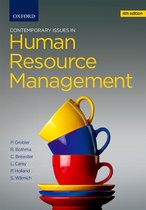HRM3701
ASSIGNMENT 2
SEMESTER - 1
DUE DATE: 18 APRIL
2024
"Elevate Your Excellence: Where Distinction Meets Assurance in Every Assignment!"
, HRM3701 ASSIGNMENT 2 SEMESTER 1 – 2024 (794436)
DUE DATE: 18 APRIL 2024
© 1
, TABLE OF CONTENTS
PAGE NO.
1. Introduction ………………………………………………………………………………………........... 3
TASK 1:
1.1. Question: Identification of Employees Low Job Performance …………………. 4
1.2. Question: Steps for Addressing Unsatisfactory Performance ………………….. 5-6
1.3. Question: Criteria for Employment Termination …………………………………….. 7
1.4. Question: Panel Debate on Termination Decision …………………………………… 8-9
1.5. Question: Consequences of Termination for Each Employee …………………… 10
1.6. Question: Addressing Legal Claims After Termination …………………………….. 11 - 12
TASK 2:
2.1. Question: Comparison of Salary with Market Averages ………………………….. 13 - 14
2.2. Question: Factors Influencing Salary Differences ……………………………………. 15
2.3. Question: Regulation of Remuneration Practices ……………………………………. 16
2.4. Question: Talent Management Approaches for Retaining Architects ………. 17 - 18
3. Conclusion ………………………………………………………………………………………………………… 19
© 2
, 1. Introduction:
In the realm of human resources management, addressing employee performance and
compensation issues is crucial for the smooth functioning of any organization. This
introduction provides an overview of the tasks presented, which primarily focus on
identifying performance challenges, discussing termination criteria, evaluating legal
implications, and examining pay strategies within the architectural industry.
Task One delves into various scenarios where employees are underperforming or facing
termination, prompting an analysis of the reasons behind their unsatisfactory performance
and potential legal ramifications. The hypothetical case study involves ScreenInk Architects
(Pty) Ltd, a fictional architectural firm, grappling with issues ranging from alleged
discrimination to unfair dismissal claims.
Task Two shifts the focus to compensation strategies, comparing the salary structure at
ScreenInk Architects with market averages for architects of different experience levels. It
also explores factors influencing salary disparities, legal regulations governing remuneration
practices, and recommendations for talent management to enhance the firm's
competitiveness and retain skilled employees.
Through comprehensive analysis and application of relevant laws and industry practices, this
assignment aims to provide insights into effective human resource management strategies
tailored to the architectural sector in South Africa.
© 3
, TASK ONE
1.1 From the information provided in the case study, some employees had challenges that
could have a negative impact on their performance. Identify the employee who might
be experiencing low levels of job performance. State the reasons for identifying this
employee.
Job performance is defined as the total expected value to the organization of the discrete
behavioural episodes that an individual carries out over a standard period of time. As a
result, these behaviors can make a difference to organizational goal accomplishment. Since
performance behaviors have varying positive or negative consequences (performance
variance) for the organization, it is likely to contribute to or detract from organizational
effectiveness.
In aggregate, across time and across persons, negative behaviors such as workplace bullying,
absenteeism, lack of respect for company rules (policies and procedure) may detract from
organizational effectiveness. Therefore, Cameron Froneman who antagonizes other
employees at head office (bullying); hates to fill out company reports or complete
any administration-related tasks and refuses to do so on certain occasions (defies the
company rules), which forces others to complete it for him in order to get the job done
could experience low levels of job performance.
© 4





